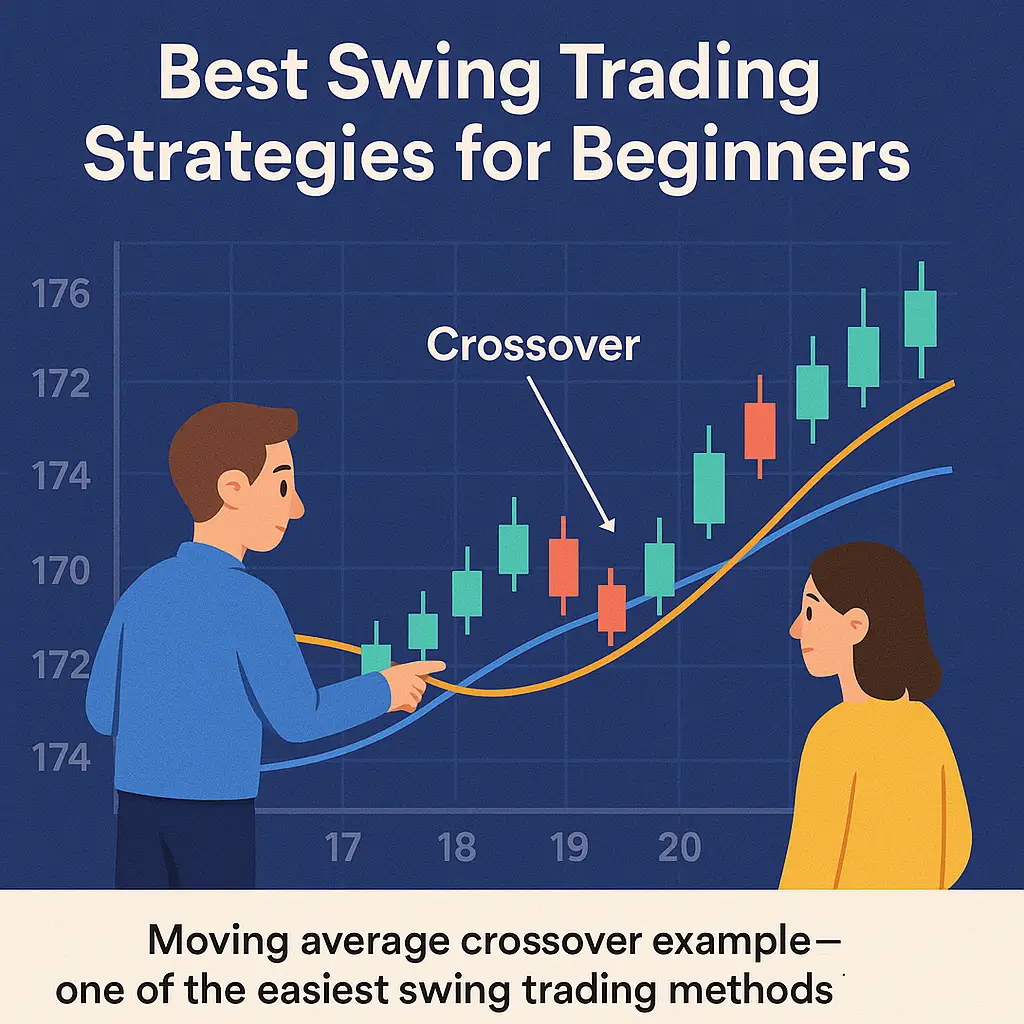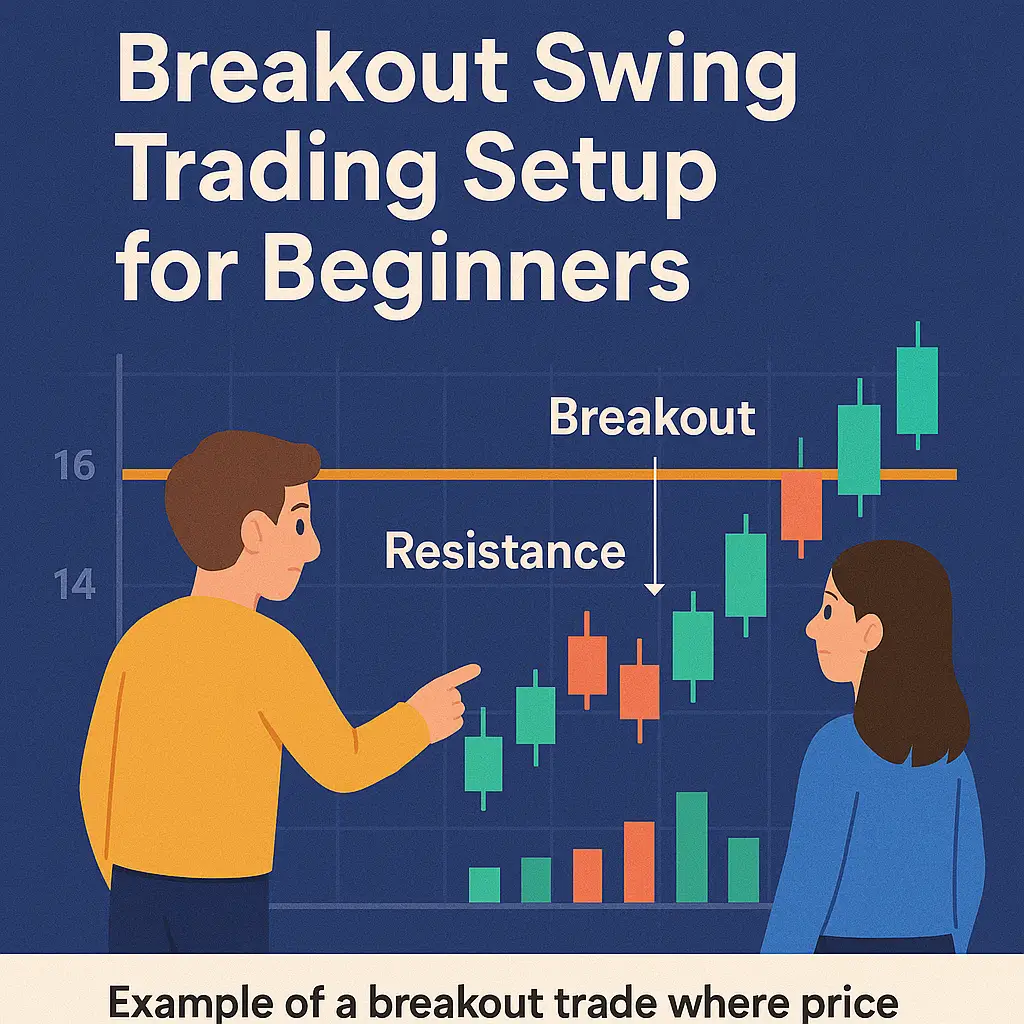
5 Best Swing Trading Strategies for Beginners You Can’t Afford to Miss
Swing trading is an accessible path for part-time traders who want to capture multi-day moves without staring at charts all day. If you’ve been searching for the best swing trading strategies for beginners, this evergreen guide breaks down the most reliable, easy-to-follow approaches so you can start with confidence.
We’ll cover simple swing trading strategies, practical beginner swing trade setups, and easy swing trading methods that help new traders avoid common pitfalls. By the end, you’ll have a shortlist of profitable swing trading strategies you can test, track, and refine—without overcomplicating your process.
Quick Summary
Learn five core strategies—Moving Average Crossover, Breakout, Pullback, RSI Divergence, and Support/Resistance Bounce—plus risk rules and common mistakes to avoid.
Why Swing Trading Works for Beginners
For those just starting out, swing trading offers the perfect balance between active trading and long-term investing. Unlike day trading, where trades are opened and closed within the same day, swing trading allows beginners to hold positions for several days or weeks. This gives new traders more time to analyze setups, avoid rushed decisions, and manage trades effectively.
Many platforms and experts cover swing trading basics, but most resources either overwhelm beginners with technical jargon or lack clear step-by-step strategies. That’s why we’ve built this guide to highlight the best swing trading strategies for beginners in a straightforward, easy-to-apply format.
If you’re browsing competitor resources like TradingView swing trading ideas, you’ll notice endless charts, signals, and analysis. While these can be helpful, they’re often not beginner-friendly. Instead, our strategies focus on simple swing trading strategies that cut through the noise.

If you’d like to go deeper, we’ve already created detailed resources that complement this guide, such as our article on swing trading techniques and the best indicators for swing trading. Pairing those insights with this evergreen list of strategies will give you a strong foundation for profitable trading.
And if you prefer studying from books, check out our recommendations on swing trading books that are perfect for beginners.
Strategy 1: Moving Average Crossover (A Simple, Reliable Starter Setup)
If you’re seeking simple swing trading strategies that are easy to execute, the moving average (MA) crossover is a classic. It helps new traders systematically identify trend shifts without complex indicators—perfect for swing trading for new traders.
How It Works
- Trend filter: Use a 200-day simple moving average (SMA). Only take long trades when price is above the 200-SMA; avoid fighting the higher-timeframe trend.
- Signal: A faster MA (e.g., 10-EMA) crosses above a slower MA (e.g., 20-EMA) during an uptrend. That’s your basic beginner swing trade setup.
- Entry: Enter on the close of the crossover candle or on a small pullback into the faster MA.
- Stop: Place your stop below the swing low or a multiple of ATR (e.g., 1.5×ATR) to allow for normal volatility.
- Exit: Consider taking profits at a prior resistance zone, a fixed R multiple (e.g., 2R), or when the 10-EMA crosses back below the 20-EMA.
Why It’s Beginner-Friendly
- Clear, rules-based signals—reduces second-guessing.
- Works across stocks, ETFs, and sectors.
- Pairs well with risk controls (fixed R/ATR exits).
Optional Enhancements
- Add RSI(14) to avoid buying extended conditions (e.g., wait for RSI < 70 on longs).
- Use volume confirmation (higher volume on the crossover candle).
- Anchor entries near support to improve reward-to-risk.
As you test this approach, keep a simple trade journal and track your metrics—win rate, average win/loss, and maximum drawdown. Over a sample of 30–50 trades, you’ll see whether this is one of your profitable swing trading strategies or needs tuning.
Level up this setup with our related guides: swing trading techniques, best indicator for swing trading, and swing trading books.
Ready to Practice This Strategy?
Start with a watchlist, define your MA settings (10/20 EMA + 200 SMA), and paper trade 10 test setups this month. Track results, then adjust rules to fit your style.
Strategy 2: Breakout Trading
Breakouts are among the most profitable swing trading strategies when traded with discipline. They occur when price pushes beyond a well-defined support or resistance level, often triggering strong momentum moves. For beginner swing trade setups, this strategy is simple to spot yet powerful when combined with proper risk management.

How to Trade Breakouts
- Identify a clear support or resistance level with multiple touches.
- Wait for a breakout candle that closes strongly above resistance (for longs) or below support (for shorts).
- Confirm with higher-than-average volume or momentum indicators.
- Enter on the breakout candle close or a retest of the broken level.
- Place stops just beyond the breakout level; set targets at 2R or the next supply/demand zone.
The key is avoiding false breakouts—common traps for new traders. Always confirm with volume or a secondary indicator like RSI or MACD. This increases the probability that the breakout is sustainable.
Learn the Swing Trading Basics
A complete foundation from a trusted source: Investopedia’s Swing Trading Overview
See Real-Time Breakout Ideas
Check live charts and community analysis at TradingView Swing Trading
Want to sharpen your breakout skills? Pair this method with our insights on swing trading techniques and test setups using free demo accounts before risking real capital.
FAQs on Swing Trading for New Traders
1. How much money do you need to start swing trading?
While some brokers allow accounts with as little as $500, most experts recommend at least $2,000–$5,000 to trade effectively. With a larger balance, you can diversify positions and manage risk properly.
2. What is the average holding time for swing trades?
Swing trades typically last from 2 days to 2 weeks. Some positions extend longer, especially if a trend continues. Unlike day trading, you don’t need to close by market end each day.
3. Are swing trading strategies suitable for part-time traders?
Yes. Many easy swing trading methods are designed for people who can’t watch charts all day. You can review setups once or twice daily and still execute profitable swing trading strategies.
4. Which indicators work best for beginners?
Commonly used indicators include moving averages, RSI, and MACD. These tools are simple, widely supported, and effective in identifying beginner swing trade setups.
5. Can swing trading really be profitable?
Absolutely. With a rules-based plan, strong risk management, and discipline, swing trading can consistently generate returns. However, results vary and depend on execution quality and market conditions.
Conclusion: Building Your Swing Trading Edge
By now, you’ve explored the 5 best swing trading strategies for beginners: moving average crossovers, breakout trading, pullbacks, RSI divergence, and support/resistance bounces. Each method offers simple swing trading strategies that can be adapted to different markets.
Remember, the key to success is not just finding a strategy but executing it with discipline, managing risk, and reviewing your trades. As you refine your setups, lean on trusted educational resources like our swing trading techniques guide and the best swing trading books for deeper insights.
With practice and consistency, you’ll turn these profitable swing trading strategies into your personal edge in the markets.
Start Your Swing Trading Journey Today
Apply one of these strategies on a demo account, track your results, and build confidence before going live. When you’re ready, follow our daily alerts for even more actionable insights.